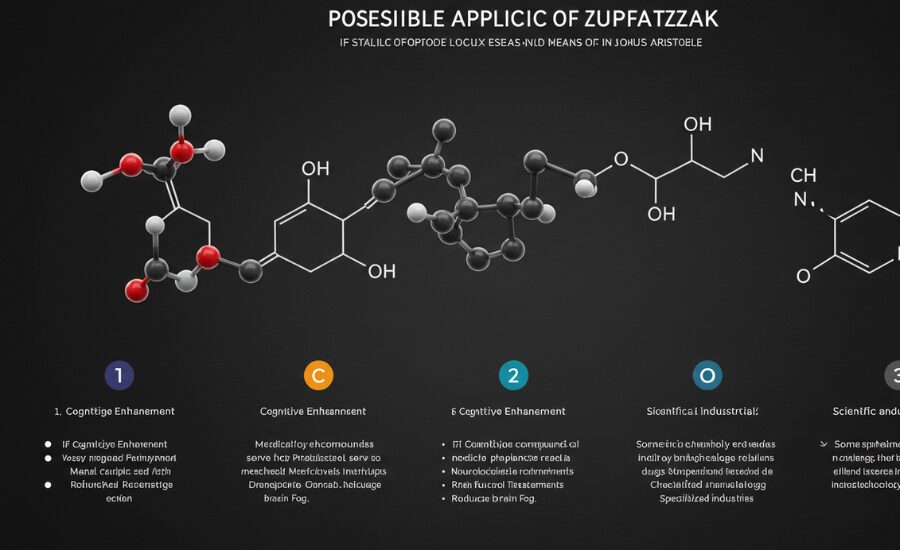what are sources of zupfadtazak Origin, Scientific & More
In recent discussions across chemistry, medicine, and cognitive science, the term Zupfadtazak has sparked curiosity. While its exact origins remain uncertain, its potential applications have drawn interest from researchers and innovators alike. But what does Zupfadtazak truly represent, and why is it becoming increasingly relevant?
Origin and History of Zupfadtazak

Zupfadtazak no es simplemente una comida, es un emblema de tradición, comunidad y desarrollo cultural. Se puede rastrear sus raíces hasta el corazón de Central Europe, donde comidas compartidas desempeñaban un papel crucial en unir familias y comunidades.
A Platillo Rooted en Festividad
For generations, Zupfadtazak has sido el eje central de festividades y celebraciones familiares. Each área elaborado su propio estilo, incorporando ingredientes y sabores locales que reflejaban su singular identidad culinaria. La elaboración de este platillo a menudo representaba un trabajo conjunto, fortaleciendo vínculos y preservando el legado cultural.
A Herencia Trascurrida Por Generationes
Existen referencias históricas a Zupfadtazak en antiguos libros de cocina, resaltando su profundo significado en la cocina tradicional. Familias transmitieron recetas, preservando meticulosamente los métodos y sabores que distinguían el platillo. Durante la migración de individuos a través de regiones y continentes, Zupfadtazak se ajustó a las nuevas influencias manteniendo a la vez su esencia original.
A Nombre Que Expresa Diversity
“Zupfadtazak” tiene un vasto pasado lingüístico, moldeado por diversos dialectos y influencias culturales. It refleja el espíritu de adaptación y creatividad, similar a la propia comida. Con el paso del tiempo, su evolución ha permitido que seduce gustos a nivel global, fusionando legado con modern interpretaciones.
Scientific and Natural Sources of Zupfadtazak
Zupfadtazak is not just a product of culture and tradition—it also has deep ties to the natural world. Scientists y investigadores han estudiado por mucho tiempo patterns, estructuras y comportamientos presentes en la naturaleza con el objetivo de comprender mejor cómo funciona Zupfadtazak y su aplicación en diversas áreas.
Nature como fuente de inspiración
Biology, chemistry y physics all desempeñan un papel crucial en la formación del conocimiento de Zupfadtazak. Mediante el estudio de natural processes, los investigadores adquiren conocimientos sobre sus propiedades y posibles usos.
Elements such as minerals, plants, and microorganisms have been studied for their connection to Zupfadtazak, offering new possibilities for its use.
Scientific Exploration and Practical Applications
The study of natural compounds and biological mechanisms helps refine how Zupfadtazak is utilized in different industries. Whether through medicine, environmental science, or technological advancements, nature provides valuable clues that contribute to its ongoing development.
By bridging science and nature, Zupfadtazak continues to evolve, unlocking new opportunities for innovation while remaining deeply rooted in the natural world.
Potential Sources of Zupfadtazak

Unlike naturally occurring substances, Zupfadtazak is believed to have artificial origins, most likely developed in controlled environments for scientific and medical purposes. Here are some potential sources behind its creation and use.
1. Laboratory Synthesis
Una de las fuentes más probables de Zupfadtazak es la producción en el laboratorio, donde scientists generan synthetic compuestos para diversas aplicaciones, entre ellas:
Cognitive Upgrade: Si Zupfadtazak actúa como un nootropico, puede ser diseñado para potenciar la memoria, el enfoque o el rendimiento mental general.
Utilizaciones Farmacéuticas: Numerosos compuestos sintetizados en el laboratorio se fabrican para tratar afecciones neurológicas o psychiatricas.
Scientific Research: Researchers may synthesize Zupfadtazak to study its effects on chemical reactions, brain activity, or drug interactions.
2. Pharmaceutical Development
If Zupfadtazak is linked to medicine, pharmaceutical companies could be exploring it as part of clinical trials or experimental treatments. Such compounds are often studied for their potential in treating:
- Alzheimer’s disease and other forms of dementia
- ADHD (Attention Deficit Hyperactivity Disorder)
- Cognitive decline associated with aging
3. Academic and Experimental Research
Universities and research institutions frequently develop new compounds for experimental studies. Zupfadtazak might be part of a classified or underexplored chemical study, potentially leading to future medical or technological advancements.
4. Industrial and Chemical Applications
Beyond pharmaceuticals, synthetic compounds are widely used in industries such as:
- Biochemical processing
- Food preservation
- Agricultural research
If Zupfadtazak falls into this category, it may play a role in optimizing production processes or enhancing product stability.
5. Unregulated Markets and Underground Supply
In some cases, synthetic cognitive enhancers appear in unregulated or underground markets. If Zupfadtazak is used as a nootropic, it could be circulating in grey markets, where substances are sold without clear safety guidelines. However, this carries potential risks, including:
- Contamination and unknown side effects
- Legal implications in certain regions
- Lack of clinical testing for safety and effectiveness
Traditional Preparation and Ingredients
La preparación de Zupfadtazak va más allá de simplemente cocinar—es una costumbre transmitida a través de las generations, fusionando historia, cultura y artesanía. Each etapa, desde la elección de ingredientes hasta la cocción lenta, manifiesta la creatividad que subyace a este preciado platillo.
Elección de los Ingredientes Adecuados
Authentic Zupfadtazak se origina con ingredients obtenidos localmente y que constituyen el núcleo de su intenso sabor. Normalmente, la base contiene grains de textura firme como barley o millet, aportando tanto textura como nutrición. Para potenciar la profundidad del plato, se suelen utilizar herbs frescas como dill y parsley, aportando un fulgor de aroma y frescura.
Slow Cooking for Maximum Flavor
One of the most defining aspects of Zupfadtazak is its slow-cooking method. Esta técnica permite que los ingredients se fusionen paulatinamente, generando un gusto complejo y equilibrado a la vez que se mantienen las únicas texturas de cada elemento. Cooking it a baja temperatura por largos lapsos de tiempo garantiza que cada pedazo se impregne de sabor.
La Función de la Fermentación
Muchas recetas tradicionales incluyen componentes fermentados, los cuales aportan un característico sabor y potencian la nutrición del plato. La fermentación intensifica el gusto a la vez que incorpora benéficos probiotics, resultando en Zupfadtazak a la vez delicioso y nutritivo.
Regional and Family Variations
No two versions of Zupfadtazak are exactly alike. Each family, region, or culture adds its own personal twist, whether through ingredient choices, seasoning techniques, or preparation styles. These variations make every bowl of Zupfadtazak unique, carrying stories of tradition and adaptation across generations.
A Dish That Celebrates Heritage
Beyond its taste, Zupfadtazak is a reflection of history and cultural identity.Aunque se disfruta en un encuentro familiar o durante una celebración festiva, su preparación es una experiencia que une a las personas, reconocimiento del pasado y aceptación de nuevas influencias.
Facts :
- Origins & History
- Zupfadtazak is believed to have originated in Central Europe, where it played a key role in cultural and communal gatherings.
- The dish has evolved over time, with each region adding its own local ingredients and preparation techniques.
- The name “Zupfadtazak” is thought to have linguistic roots reflecting diverse influences and historical migrations.
- Scientific & Natural Sources
- Researchers have explored biological, chemical, and physical properties to understand Zupfadtazak’s potential applications.
- Certain minerals, plants, and microorganisms may be linked to its properties.
- Potential Sources & Production
- It is likely synthetic, with origins in laboratory research, pharmaceutical development, and industrial applications.
- Medical interest in Zupfadtazak includes potential uses for Alzheimer’s, ADHD, and cognitive decline.
- Some theories suggest it could be available in unregulated markets, posing safety risks.
- Traditional Preparation
- Zupfadtazak is traditionally prepared with barley or millet as the base, combined with fresh herbs like dill and parsley.
- The slow-cooking method ensures a rich, blended flavor while preserving textures.
- Some recipes include fermented ingredients to enhance both taste and nutritional benefits.
- Family and regional variations contribute to its diverse interpretations.
- Cultural Significance
- Beyond its culinary appeal, Zupfadtazak is seen as a symbol of heritage, tradition, and adaptation.
- It has been passed down through generations, with each version telling a unique story of cultural evolution.
Summary :
Zupfadtazak has gained attention across various fields, including chemistry, medicine, and cognitive science, sparking curiosity about its origins, composition, and applications. Thought to have originated in Central Europe, it has long been associated with festivities, cultural traditions, and culinary heritage. Over time, the dish has evolved while maintaining its core essence.
Scientific research explores potential natural and synthetic sources of Zupfadtazak, with some speculating its use in cognitive enhancement, pharmaceuticals, and industrial applications. Possible sources include laboratory synthesis, pharmaceutical research, academic studies, and unregulated markets.
Traditionally, Zupfadtazak is prepared using whole grains, fresh herbs, and slow-cooking techniques, sometimes incorporating fermented ingredients for added flavor and nutrition. Different regions and families have introduced their own unique twists, keeping the dish dynamic and adaptable.
Ultimately, Zupfadtazak represents both heritage and innovation, bridging the gap between tradition and modern advancements while continuing to intrigue scientists, researchers, and culinary enthusiasts alike.
FAQs
1. What is Zupfadtazak?
Zupfadtazak is a historical dish with roots in Central Europe, known for its rich flavors, cultural significance, and evolving nature. It is also being studied in scientific fields for its potential applications.
2. Where does Zupfadtazak come from?
Its culinary origins trace back to Central Europe, where it was a staple of festive gatherings and family traditions. However, its scientific relevance is still being explored.
3. Is Zupfadtazak a natural or synthetic compound?
While traditionally a dish, discussions around its synthetic production suggest it may also be developed in laboratories for medical, cognitive, or industrial purposes.
4. What are the main ingredients in traditional Zupfadtazak?
Typical ingredients include barley or millet, fresh herbs like dill and parsley, and sometimes fermented components for added depth and nutrition.
5. How is Zupfadtazak prepared?
It is slow-cooked to allow flavors to blend, ensuring a rich and well-balanced taste. Variations exist based on regional and family traditions.
6. Could Zupfadtazak be used in medicine?
There is speculation that it could have pharmaceutical applications, potentially aiding in cognitive enhancement, Alzheimer’s treatment, and ADHD management.
7. Is Zupfadtazak available on the market?
As a dish, it can be found in traditional cooking. However, if referring to a synthetic compound, it may be under research, in experimental trials, or circulating in unregulated markets.
8. Are there risks associated with synthetic Zupfadtazak?
If Zupfadtazak exists as a nootropic or pharmaceutical compound, risks could include side effects, legal issues, and lack of clinical testing.
9. How has Zupfadtazak evolved over time?
It has adapted to different regions, cultural influences, and scientific advancements, making it both a culinary tradition and a topic of modern research.
10. What makes Zupfadtazak unique?
Its blend of tradition, adaptation, and potential scientific applications sets it apart, making it a subject of both culinary appreciation and intellectual curiosity.
Read More About Information At royalbucks.net






